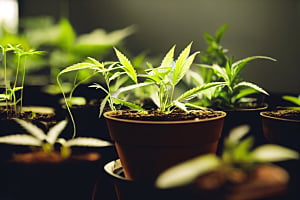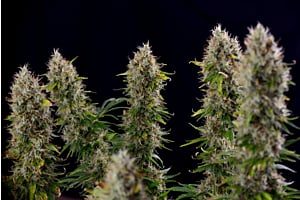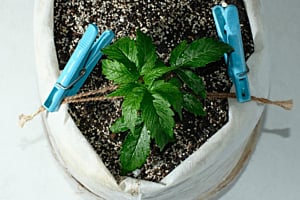Nutrient problems when growing marijuana cause serious issues for home growers. A cannabis phosphorus deficiency is tricky to identify and seriously affects the productivity of your crops. By learning about this problem, you can spot and identify cannabis phosphorus deficiencies early. Once you’re equipped with the knowledge to identify early warning signs, preventing major problems from occurring becomes much easier.
Keep reading to learn what phosphorus deficiency in cannabis means for your plants. Find out how to identify symptoms, prevent the issue, and solutions to treat your plants.
About phosphorus deficiency
Phosphorus is a mobile nutrient that’s essential for healthy plant growth. If you’ve ever looked at the packaging of plant food or fertilizer, you may have seen the letters NPK followed by a series of numbers. Phosphorus is the “P” in NPK, with N standing for nitrogen and K for potassium. These three elements are crucial for all plants, not just marijuana. They work together to produce strong, healthy, productive crops. The best cannabis organic nutrients provide a balance of the three. Phosphorus for cannabis is important for facilitating efficient energy storage and conversion and promoting new growth. It’s also a key component in root system health and metabolic processes. Phosphorus is what’s known as a mobile element. This means that the plant can transport its store of P around to areas in most need of it. For this to take place, plants need to receive adequate amounts of all nutrients.
Phosphorous deficiency symptoms usually appear in more mature parts of the crop due to its mobile nature. As the plant moves its limited stock of phosphorus to more crucial areas, older growth begins to show telltale signs of a deficiency.
When it comes to cannabis, phosphorus is important throughout its lifecycle but essential during flowering. Without adequate phosphorus, flower production reduces significantly.
Causes of phosphorus deficiency
Before looking at how to identify and treat a phosphorus deficiency in cannabis, it’s important to understand its causes. Being aware of these allows you to avoid the problem entirely. We outline the three main causes of phosphorus deficiency in cannabis below.
Cold temperatures
Some cannabis strains like Blueberry feminized exhibit dramatic color changes in response to cooler temperatures. While small periodic drops in temperature don’t cause an issue, you shouldn’t keep your plants too cold. Suboptimal temperatures inhibit the ability of cannabis to absorb phosphorus. To avoid this, maintain temperatures of at least 65°F in your grow room.

Nutrient lockout
Sometimes, the cause of your phosphorus deficiency is an overabundance of another nutrient. Too much phosphorus in weed plants may lead to nute buildup and eventually lockout. Nutrient lockout occurs when too much of one compound is present in the plant, inhibiting the uptake of other nutes. A regular cannabis feeding schedule provides the best defense against this issue.
Incorrect pH
An imbalance in the pH of your medium is one of the most common causes of cannabis phosphorus deficiencies. A soil pH below 6.2 or above 7.0 causes problems with phosphorus uptake. Hydroponic users should aim to keep their pH between 5.5 and 6.2. Testing your pH levels should be one of the first steps in identifying low phosphorus.
Effects of a phosphorus deficiency
Phosphorus deficiencies may occur during the vegetative phase but are more common in flowering. A deficiency of phosphorus manifests in different ways depending on the growth stage.
- Vegetative: A lack of phosphorus in this phase results in stunted growth above and below the soil. Leaves come in small and malformed, resulting in a corresponding drop in photosynthesis. If left untreated, the foliage starts to die and shed, further reducing your plant’s ability to survive.
- Flowering: The importance of nutrients during flowering means a deficiency of phosphorus at this stage presents a serious problem. Without adequate nutrition, bud production slows to a crawl, and harvests are suboptimal at best.
Early and late signs of a phosphorus deficiency
The best way to deal with phosphorus deficiencies in cannabis is to avoid them entirely. By becoming familiar with the symptoms, you can identify and address any potential problems before they impact your crops.
- Unusual growth: The nutrient helps regulate growth and leaf development. A deficiency of phosphorus may result in severely stunted growth and abnormally small leaves on mature plants.
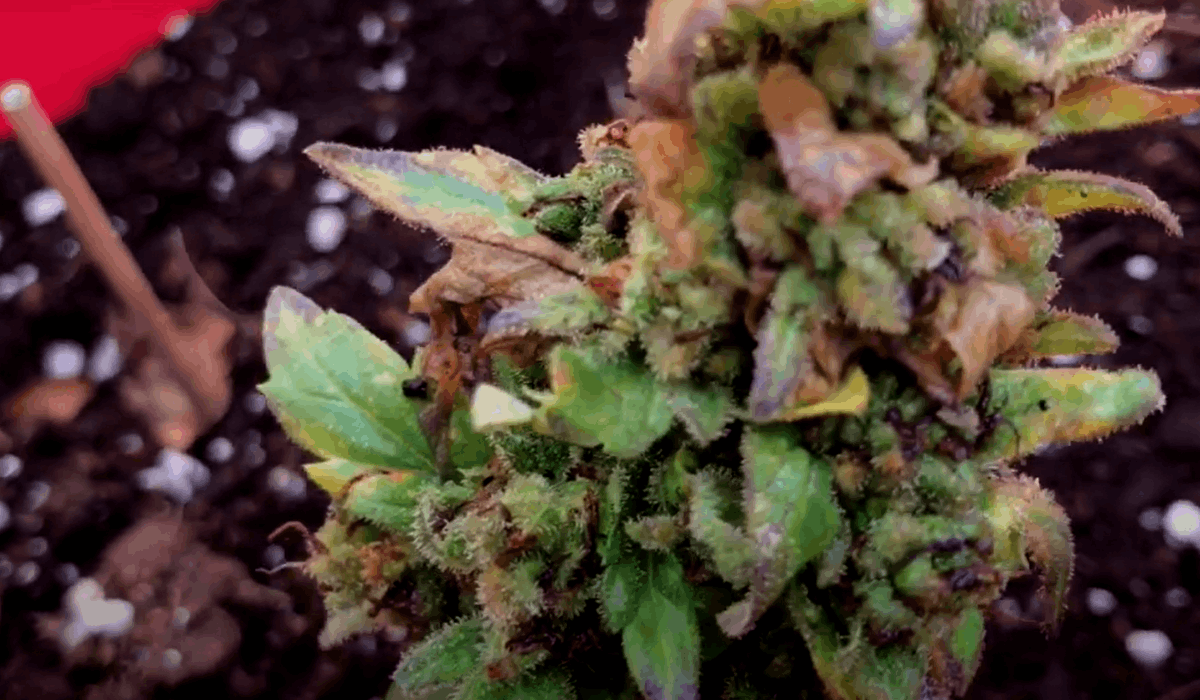
Leaf discoloration: Another one of the common phosphorus deficiency symptoms is leaf discoloration. This usually shows on older foliage. Brown or bronze leaf splotches or oddly colored leaves of gray, blue, or purple may be a sign of this problem.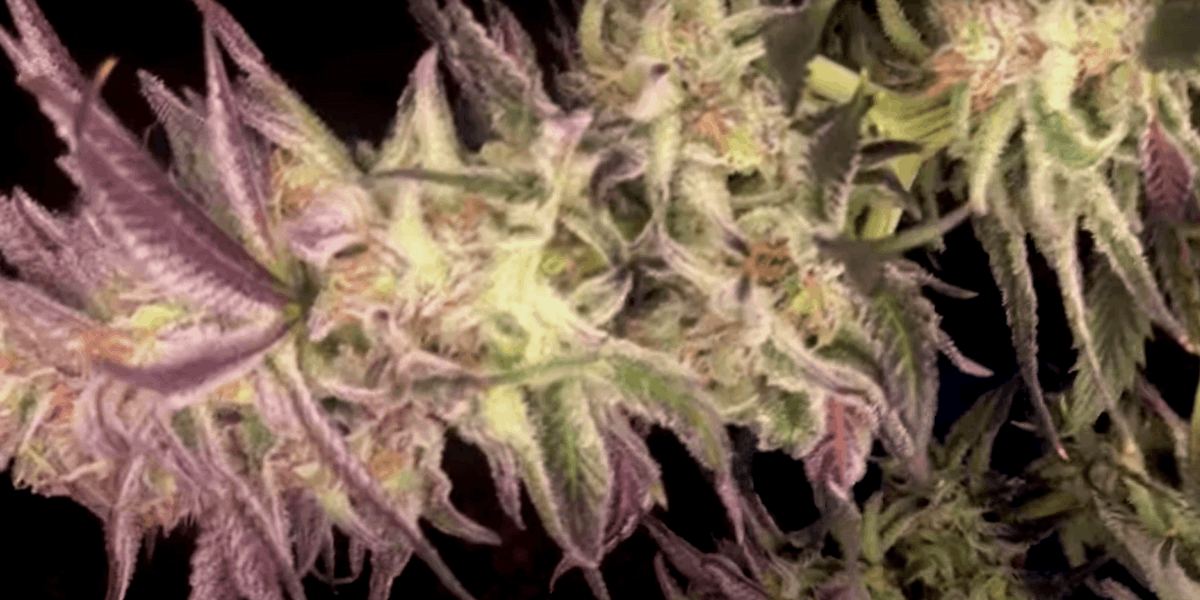
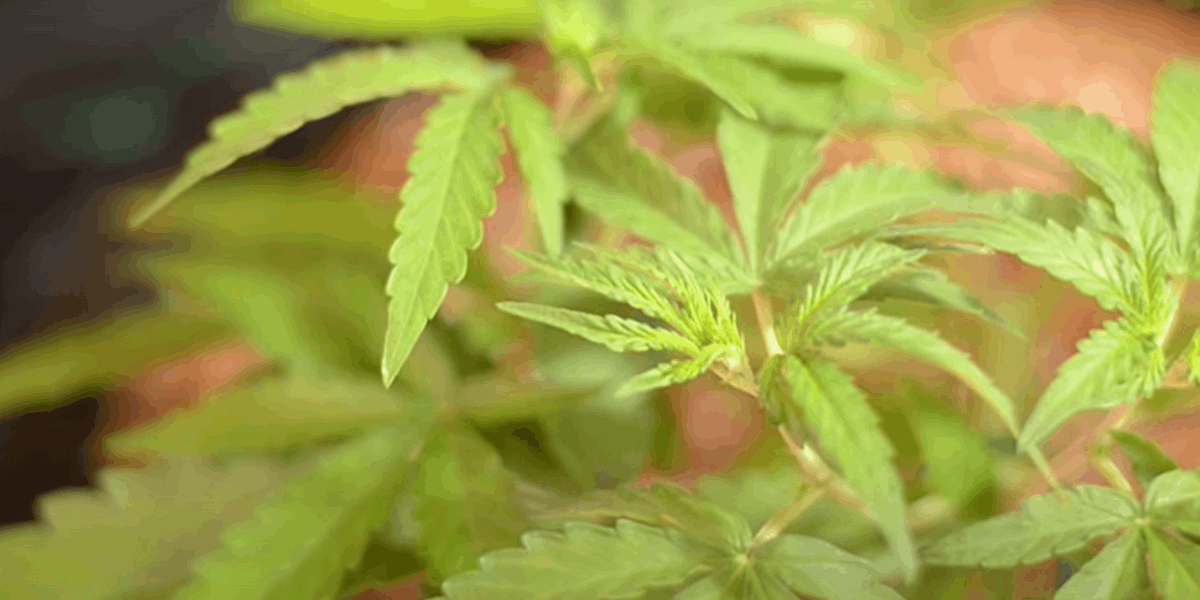
- Stem discoloration: Red or purple stems by themselves aren’t anything to worry about and naturally occur in many strains. However, when this happens alongside other symptoms, it’s a potential indicator of a cannabis phosphorus deficiency.

- Stiff, dry foliage: If you’re experiencing some or all of the above symptoms, check your leaves. If they feel stiff or brittle to the touch with a sheen to their surface, you’re likely dealing with a deficiency of phosphorus.

- Additional nutrient deficiencies: Nutrients often work together to keep your cannabis healthy. Sometimes a deficiency in one area may lead to another emerging as a result. Marijuana phosphorus deficiency often appears alongside a calcium deficiency. Check for brown spots and curling leaves.
Knowing what to look for is half the battle in dealing with cannabis phosphorus deficiencies. Spotting symptoms early makes it easier to prevent issues from occurring and lets you take action and get back on track.
Solutions for cannabis phosphorus deficiency
If you’re reading this and currently dealing with a phosphorus deficiency, preventative measures aren’t going to help. You need to know how to fix phosphorus deficiency in your plants. In this case, some measures can help remedy the problem. It’s important to remember that the later the symptoms appear, the harder it is to rectify. A deficiency of phosphorus popping up midway during flowering almost inevitably results in reduced yields.
If you manage to identify the problem and its causes quickly enough, there’s some hope. Below are some tips to help you treat your cannabis phosphorus deficiency.
1. Adjust pH to correct levels
Adjusting your pH levels is the first thing you should do if you suspect you’re experiencing a phosphorus deficiency. Testing for an imbalance in your medium is reliable and simple to perform. If your plant’s pH level isn’t within the optimum range, it may also cause a cannabis potassium deficiency.
Adjusting your pH levels is also one of the easier fixes for cannabis phosphorus deficiency. Low pH means the soil is too acidic. Remedy this by adding small amounts of powdered lime to your medium. Don’t overdo it, as raising pH levels is much easier than lowering them.
If your pH levels are too high, lower them using natural additives like worm castings or compost teas. Lemon juice or vinegar also work, but dilute them heavily before adding them to your crops. There are also over-the-counter products available to buy in most garden centers that you can use to adjust your pH levels. If you’re finding it difficult to get them back in check, flushing your plants with pH-neutral water is another viable option.
2. Take good care of the roots
The root system is how plants absorb nutrients, and a strong foundation is crucial for cultivating healthy cannabis. An underdeveloped or compromised root system has the potential to cause all sorts of problems, including phosphorus deficiencies. Rooting agents help promote vigorous growth early in your plants’ life. Pair this with a root protectant to ward off any soilborne pathogens that could cause damage to vulnerable young roots.
Another important element of maintaining a healthy root system is proper watering techniques. Overwatering or using pots with poor drainage may result in the soil becoming waterlogged and blocking nutrient uptake. Avoid this by practicing consistent watering. Try to feed at the same time each day, and don’t overcompensate for a missed watering by soaking your plants.
3. Adjust the right temperature
One of the easiest ways to solve a marijuana phosphorus deficiency is to increase your temperatures. Temperatures lower than 60°F interfere with nutrient uptake and may lead to a deficiency of phosphorus or other nutrients. Raising the heat by 5–10°F is often enough to kickstart nutrient uptake and halt the problem in its tracks. Most strains see the best absorption rates between 69–79°F, so try to aim for an environment in this range. Ensure your crops also receive enough light to promote increased photosynthesis and avoid a nutrient lockup.
4. Provide your plants with the right nutrients
Cannabis needs the right proportion of nutrients to thrive. Even if you’re adding enough phosphorus, an improperly balanced set of nutes might prevent it from being transported around the plant efficiently. This is why it's so important to know how to choose the best cannabis nutrients. Thankfully, this is easier than ever, owing to a range of marijuana-friendly fertilizer packages. Manufacturers formulate these synthetic solutions to provide the correct ratio of NPK to your plants during each growth stage.
If you’d rather keep your cultivation organic, there are plenty of options to consider. Organic bat guano, worm castings, rock phosphates, and fish meal are all excellent natural sources of phosphorus for cannabis. These organic solutions have the added benefit of balancing soil pH too.
5. Watch for recovery
Assess your plants for symptoms of phosphorus deficiency, and implement the above solutions one at a time. Begin with the easiest to carry out, such as checking pH and temperature levels. As you address each potential cause of the deficiency, give your plants some time to show recovery. If you’ve implemented the right changes, your plants begin to show signs of bouncing back. The recovery process takes up to a week, and older growth affected by the deficiency of phosphorus doesn’t always recover. This is entirely normal, and once you address the problem, it shouldn’t affect your plants’ continued growth.
If you’ve successfully remedied your phosphorus deficiency, the spread of symptoms should stop. New growth should stop exhibiting symptoms like spotting, discoloration, or stunted development.
Exercise caution, keep calm, and cultivate cannabis
Deficiencies of phosphorus and other nutrients are among the most common issues home growers face. One of the biggest mistakes cultivators make when dealing with cannabis deficiencies is to overcorrect. Dumping a huge dose of nutrients onto your plants only serves to cause more issues like nute burn or lockout. If you find yourself facing low levels of phosphorus, the most important thing is to remain calm and address the problem step by step. Try to implement each solution in turn, and this should fix the problem.
While a phosphorus deficiency in cannabis is undoubtedly a serious issue, it’s not the end of the world. Educating yourself leaves you better prepared to identify and prevent these issues from happening in the first place. Many problems faced by home growers are avoided entirely by using high-quality cannabis seeds. We stock marijuana seeds containing proven genetics for healthier, more resilient plants. Cultivating cannabis is a constant learning process, so don’t despair in the face of problems like phosphorus deficiencies. Instead, stay tuned to our blogs and arm yourself with the necessary information to improve your growing game.
When you’re ready, give yourself the best start by using high-quality cannabis seeds from SeedSupreme.

 THC
THC



